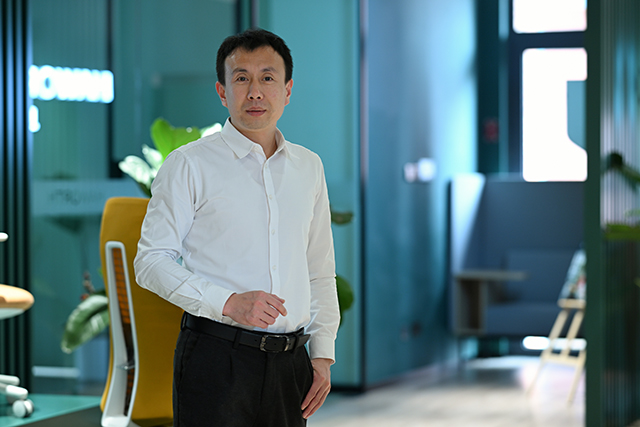邵唯晏作品:自在 廢棄角材新的生命
來源:中裝新網(wǎng) 時(shí)間:2014-01-09 12:35:07 [報(bào)告錯(cuò)誤] [收藏] [打印]
主持設(shè)計(jì)師:邵唯晏
主題: 自在 (Freedom)
當(dāng)代設(shè)計(jì)師的使命
本作品為受邀參展之作品,展覽主軸希望能針對(duì)當(dāng)代「節(jié)能永續(xù)」的議題出發(fā)。而室內(nèi)裝修業(yè)(interior design)一直以來都是相當(dāng)耗能的產(chǎn)業(yè),由其是木料的使用更是驚人。有鑒于于此,本作品所使用的材料為廢棄角材或工地剩余角材,期望透過設(shè)計(jì)手法給予廢棄角材新的生命,也企圖透過本作品傳達(dá)當(dāng)代設(shè)計(jì)師新的使命,如今設(shè)計(jì)產(chǎn)業(yè)已非當(dāng)時(shí)工業(yè)革命時(shí)期(Industrial Revolution)一昧地制造生產(chǎn),設(shè)計(jì)師當(dāng)代更重要的任務(wù)是要往化腐朽為神奇的方向邁進(jìn),為永續(xù)節(jié)能盡一份心力。
Designers’ Green Mission
“Freedom” is invited to be on display at Taipei World Design Expo 2011 with the theme of “Green and Sustainability”. Interior design business is often considered not earth friendly as so much woods are used in construction, and so much redundant woods are thrown out simply because people don’t have any other way of re-using them. Given above reason, this chair is designed and made entirely out of discarded woods. As green designers, we not only want to show that these waste woods scraps can be recycled and turned into innovative and stunning pieces but also make people more conscious about the environmental problem.
坐臥之間,但求自在
中國(guó)人最早并沒有所謂有椅背的「椅子」,而中國(guó)人對(duì)于椅子的觀念受佛教影響甚遠(yuǎn),佛教的彌勒通常高坐于座位上,垂一足或雙足,有時(shí)雙足交叉下垂、有時(shí)雙足下垂、有時(shí)右足下垂等,而這樣或坐或臥的姿勢(shì)隨著佛教的盛行也影響中國(guó)人對(duì)于「椅子」的思維。比如先秦時(shí)代的人民們就已發(fā)展出一套完整「席地而坐」的文化,「席」則成為當(dāng)時(shí)日常生活最普遍的坐具。直到戰(zhàn)國(guó)時(shí)期后,低型的家具,比如「床榻」就為當(dāng)時(shí)常用的坐具。到了魏晉時(shí)代則流行獨(dú)坐式小榻,這種小榻也有兩人坐的。而漢唐的「韓熙載夜宴圖」,更能讀到古人以「榻」和「羅漢床」為中心待客的場(chǎng)面,當(dāng)時(shí)的「坐具」已有了復(fù) 合性的機(jī)能。到了清朝,清朝人或臥或坐著吸鴨片的景像,我想各位歷歷在目。
Sitting or lying? It’s your freedom.
It is said that originally there was no chair in China. Around AC 200 Buddhism entered China and brought with it the idea of the Buddha sitting upon a raised platform. The sitting or reclining postures of the Buddha began to have a great influence on Chinese concept of chair. History shows that in early period, woven mats, which sometimes accompanied by arm rests or low tables, were commonly used by ancient Chinese to sit on floors. The raised platform evolved as an honorific seat for special guests or officials, and longer version of mats were used for reclining and evolved into bench, daybed and bed with multiplex functions.
相關(guān)文章
- 中孚泰丨長(zhǎng)春市規(guī)劃展覽館及博物館項(xiàng)目規(guī)劃展覽館布展
- 澳珀故事
- 中設(shè)筑邦(北京)建筑設(shè)計(jì)研究院:邢臺(tái)市金融中心
- CCD:蛇口希爾頓酒店樣板間
- 河南省軍區(qū)國(guó)防教育基地陳列布展設(shè)計(jì)
-
王耀:滿足客戶的客戶需求 才是好作品

面對(duì)競(jìng)爭(zhēng)日趨激烈的市場(chǎng)競(jìng)爭(zhēng),建筑裝飾設(shè)計(jì)企業(yè)應(yīng)該如何應(yīng)對(duì)?作為設(shè)計(jì)院的領(lǐng)導(dǎo),如何引導(dǎo)職場(chǎng)新人快速適應(yīng)崗位
- 張展翼:平衡設(shè)計(jì)中的邏輯和非邏輯
- 劉亞濱:青春一路狂飆
- 設(shè)計(jì)師高媛:沒有完美的設(shè)計(jì),都有不同的遺憾
- 優(yōu)秀指導(dǎo)老師專訪 | 從選手到導(dǎo)師 周夢(mèng)琪的“中裝杯”之路
- 中裝新網(wǎng)專訪 | 蔣燕微:用熱愛,譜寫設(shè)計(jì)的每個(gè)篇章
- 中外建姜靖波:深化設(shè)計(jì)未來也許更多是經(jīng)驗(yàn)和軟件的結(jié)合
- 鴻樣設(shè)計(jì)鄭惠心:創(chuàng)造多方共贏的互動(dòng)空間
- 南通裝飾設(shè)計(jì)院秦嶺:成功的設(shè)計(jì)創(chuàng)意是實(shí)現(xiàn)得了的!
- 蔣繆奕:豪宅市場(chǎng)未來的發(fā)展方向
-
什么是設(shè)計(jì)師的成本與價(jià)值

近日,《你個(gè)設(shè)計(jì)師有什么成本?》一文刷爆朋友圈,文中講了一個(gè)故事,表達(dá)了大眾對(duì)成本的理解,也提出了一個(gè)有
- MAD建筑事務(wù)所
- 維斯林室內(nèi)建筑設(shè)計(jì)有限公司
- 香港創(chuàng)界設(shè)計(jì)( ZJD) 設(shè)計(jì)事務(wù)所
- 寧波東羽裝飾設(shè)計(jì)工程有限公司
LINKS
中國(guó)室內(nèi)設(shè)計(jì)與裝飾網(wǎng) | designboom設(shè)計(jì)邦 | 新華網(wǎng) | 中國(guó)建筑新聞網(wǎng) | 搜房家居網(wǎng) | 北京市建筑裝飾協(xié)會(huì) | 中裝設(shè)計(jì)培訓(xùn) | 鳳凰家居 | 中國(guó)建筑與室內(nèi)設(shè)計(jì)師網(wǎng) | 中國(guó)網(wǎng)建設(shè)頻道 | 筑龍建筑設(shè)計(jì)網(wǎng) | 視覺同盟 | 湖南室內(nèi)設(shè)計(jì)師協(xié)會(huì) | 城視窗 | 中裝協(xié)設(shè)計(jì)網(wǎng) | 非常設(shè)計(jì)師網(wǎng) | 新家優(yōu)裝 | 行走吧,媒體團(tuán)! | 新疆室內(nèi)設(shè)計(jì)聯(lián)盟 | YANG設(shè)計(jì)集團(tuán) | 中式設(shè)計(jì) | 大宅國(guó)際別墅裝修設(shè)計(jì) | 四合茗苑中式裝修 | 設(shè)計(jì)王DesignWant?&?住宅美學(xué)Living&Design |





